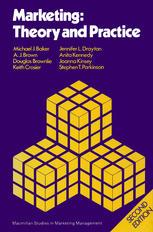| Tamarisk, Inc. Condensed Income Statement December 31, 2019For the Year Ended December 31, 2019For the Month Ended December 31, 2019 |
| | FIFO | | LIFO |
| Beginning InventoryCost of Goods Available for SaleCost of Goods PurchasedCost of Goods SoldDividendsEnding InventoryGross Profit / (Loss)Income before Income TaxesIncome Tax ExpenseNet Income / (Loss)Operating ExpensesRetained Earnings, January 1Retained Earnings, December 31Sales RevenueTotal Sales Revenue | $ | | $ |
| Beginning InventoryCost of Goods Available for SaleCost of Goods PurchasedCost of Goods SoldDividendsEnding InventoryGross Profit / (Loss)Income before Income TaxesIncome Tax ExpenseNet Income / (Loss)Operating ExpensesRetained Earnings, January 1Retained Earnings, December 31Sales RevenueTotal Sales Revenue | | | |
| Beginning Inventory Cost of Goods Available for Sale Cost of Goods Purchased Cost of Goods Sold Dividends Ending Inventory Gross Profit / (Loss) Income before Income Taxes Income Tax Expense Net Income / (Loss) Operating Expenses Retained Earnings, January 1 Retained Earnings, December 31 Sales Revenue Total Sales Revenue | | | |
| Beginning Inventory Cost of Goods Available for Sale Cost of Goods Purchased Cost of Goods Sold Dividends Ending Inventory Gross Profit / (Loss) Income before Income Taxes Income Tax Expense Net Income / (Loss) Operating Expenses Retained Earnings, January 1 Retained Earnings, December 31 Sales Revenue Total Sales Revenue | | | |
| Beginning Inventory Cost of Goods Available for Sale Cost of Goods Purchased Cost of Goods Sold Dividends Ending Inventory Gross Profit / (Loss) Income before Income Taxes Income Tax Expense Net Income / (Loss) Operating Expenses Retained Earnings, January 1 Retained Earnings, December 31 Sales Revenue Total Sales Revenue | | | |
| Beginning Inventory Cost of Goods Available for Sale Cost of Goods Purchased Cost of Goods Sold Dividends Ending Inventory Gross Profit / (Loss) Income before Income Taxes Income Tax Expense Net Income / (Loss) Operating Expenses Retained Earnings, January 1 Retained Earnings, December 31 Sales Revenue Total Sales Revenue | | | |
| Beginning Inventory Cost of Goods Available for Sale Cost of Goods Purchased Cost of Goods Sold Dividends Ending Inventory Gross Profit / (Loss) Income before Income Taxes Income Tax Expense Net Income / (Loss) Operating Expenses Retained Earnings, January 1 Retained Earnings, December 31 Sales Revenue Total Sales Revenue | | | |
| Beginning InventoryCost of Goods Available for SaleCost of Goods PurchasedCost of Goods SoldDividendsEnding InventoryGross Profit / (Loss)Income before Income TaxesIncome Tax ExpenseNet Income / (Loss)Operating ExpensesRetained Earnings, January 1Retained Earnings, December 31Sales RevenueTotal Sales Revenue | | | |
| Beginning InventoryCost of Goods Available for SaleCost of Goods PurchasedCost of Goods SoldDividendsEnding InventoryGross Profit / (Loss)Income before Income TaxesIncome Tax ExpenseNet Income / (Loss)Operating ExpensesRetained Earnings, January 1Retained Earnings, December 31Sales RevenueTotal Sales Revenue | | | |
| Beginning InventoryCost of Goods Available for SaleCost of Goods PurchasedCost of Goods SoldDividendsEnding InventoryGross Profit / (Loss)Income before Income TaxesIncome Tax ExpenseNet Income / (Loss)Operating ExpensesRetained Earnings, January 1Retained Earnings, December 31Sales RevenueTotal Sales Revenue | | | |
| Beginning InventoryCost of Goods Available for SaleCost of Goods PurchasedCost of Goods SoldDividendsEnding InventoryGross Profit / (Loss)Income before Income TaxesIncome Tax ExpenseNet Income / (Loss)Operating ExpensesRetained Earnings, January 1Retained Earnings, December 31Sales RevenueTotal Sales Revenue | | | |
| Beginning InventoryCost of Goods Available for SaleCost of Goods PurchasedCost of Goods SoldDividendsEnding InventoryGross Profit / (Loss)Income before Income TaxesIncome Tax ExpenseNet Income / (Loss)Operating ExpensesRetained Earnings, January 1Retained Earnings, December 31Sales RevenueTotal Sales Revenue | $ | | $ |






